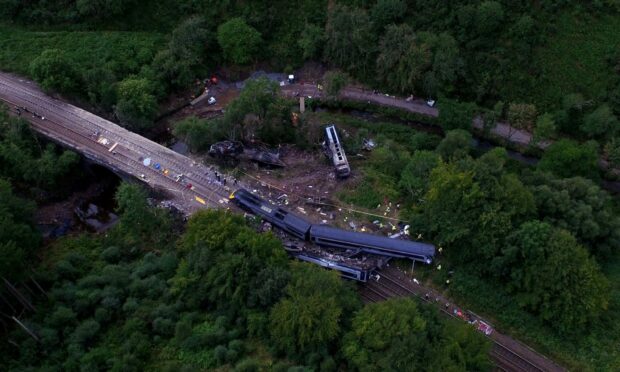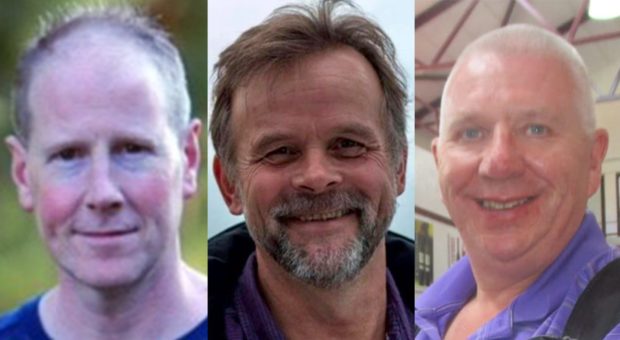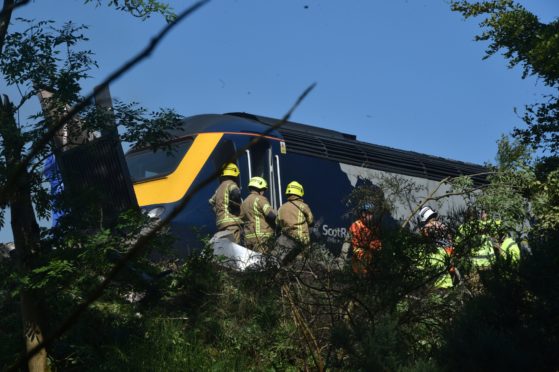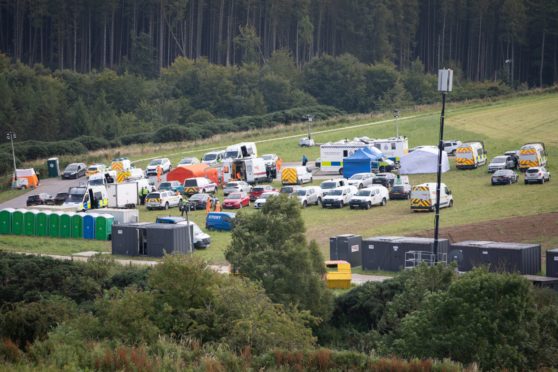Just two of the 20 recommended actions made in the wake of the Stonehaven rail disaster have been actioned so far, a new report has shown.
The Rail Accident Investigation Branch (RAIB) has released its annual report, including a progress analysis of actions taken in response to the 20 recommendations it made to Network Rail last March.
The report reveals only two of the recommendations made in the aftermath of the fatal August 2020 crash have been closed – meaning action has been taken to implement them.
The remaining 18 were still open as of March, meaning they are still under consideration.
It comes amid growing concern about cuts to Network Rail’s budget.
It has emerged the Scottish Government’s rail budget for the upkeep of the rail infrastructure – including signals and track has been reduced by £150 million over the past four years.
Drainage actions still outstanding
The RMT union has called for real terms increases in infrastructure investment and says that “urgent clarification” is needed over funding.
The union has repeatedly raised fears ministers are playing “fast and loose” with lives through infrastructure funding cuts.
Brett McCullough, Christopher Stuchbury and Donald Dinnie died in the Stonehaven rail disaster.
The 6.38am Aberdeen to Glasgow train left the tracks at Carmont, near Stonehaven on August 20, 2020 after hitting a landslip caused by a night of extreme rainfall.
Last year, the Office of Rail and Road (ORR) raised concerns about how Network Rail was addressing the recommendations made after the disaster, although some progress has since been made and their assessment updated.
The RAIB report outlines four recommendations are being taken forward by the Railway Safety and Standards Board.
However, the report also found that Network Rail had not closed the recommendations around drainage design, mitigating rainfall-related threats or derailment mitigation.
Modernising ‘Victorian rail infrastructure’
RMT regional officer Mick Hogg spoke to The Herald about the “lack of progress” over the Stonehaven recommendations.
He said: “If we are serious about learning the lessons of Stonehaven, we need to be serious about investing in Scotland’s railway and having more staff personnel, not the reverse.
“If it had not been for the pandemic [meaning less people were travelling] there would have been hundreds of deaths at Carmont on that day.
“To me it begs the question if Network Rail is this just a talking shop that delivers little.
“We have got a Victorian rail infrastructure. The only way to address is more investment.”
‘Vital mistakes of the past are not repeated’ after Stonehaven derailment
RMT has warned cuts to existing maintenance scheduled tasks will mean a reduction in headcount and overhead costs.
The union gave written evidence to the Net Zero Emergy and Transport Committee earlier this month.
The evidence urges ministers to put safety before cost-cutting and says it is “vital” mistakes of the past are not repeated.
The letter reads: “Safety should always take priority over cost-cutting, outsourcing and profiteering but RMT is concerned that the government and Network Rail are not properly taking into account the extreme risks facing us today by ageing infrastructure coupled with climate change and regular extreme weather events
“The RAIB report into the disaster at Stonehaven, Carmont, where three people tragically lost their lives found that the failure to ensure inspecctions were carried out on a drainage system directly contributed to railway engineers not identifying a construction fault which ultimately led to the derailment.
“It is absolutely vital that the mistakes of the past are not repeated. Scotland needs a railway fit for the 21st century, one that is fully funded, resilient and most importantly safe for both passengers and railways workers.”



